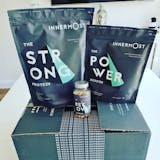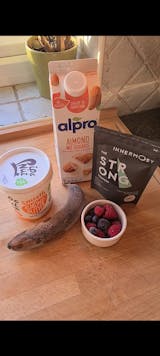We have all been there – clinging onto a favourite pair of running shoes that are well past their use by date, reluctant to throw them away purely on the basis that you are afraid no other shoes will compare. We get you. But like all things, it must come to an end. A good pair can be the difference between a great running session and a terrible one, with shoes in perfect condition providing more comfort, stability, and shock absorption. Running and partaking in high-intensity activities whilst wearing worn-out trainers can over time take a toll on legs and joints, creating high amounts of stress, and aches and pains. Nobody wants that, after all, the whole point of working out is to feel healthier and fitter whilst reaping the plentiful benefits that running entitles.
Even when your running shoes don’t seem to be in bad shape, there are signs to look out for that indicate it’s time for a breakup but knowing how long trainers last is the first point of call to get you prepped.
How Long Should Running Shoes Last?
Although we would all love the same pair of trainers to last forever, unfortunately, this isn’t yet possible. Knowing when to replace running trainers is difficult, and at some point, your swanky new shoes will be downgraded to pop-to-the-shop wear, or quick dog walks around the block attire. But before they reach this sombre stage, it is good to question - how many miles before you need to change running shoes?
As a general rule of thumb, running trainers should be replaced after 300 to 500 miles or three to six months for an easier time frame. This does depend on certain factors:
- How active you are
- The type of terrain you run on
- The design of the shoe
- Your build
- Your running style
Running on the road all the time will make kicks wear down faster than the avid treadmill runner, so if you are a gym goer, then you may be able to hold onto your trainer buddies longer than expected, in comparison to seasonal runners or professional athletes. It’s not all about the trainer’s mind, what you put into your body also plays an important part in a successful run or workout session – The Fit Protein is perfect for this! A protein blend that will allow you to push yourself further and restore energy, so you are your shoes can run for longer.
Someone’s running style also holds influence, no two runners are the same – Phoebe from Friends knows exactly how that feels (sorry Phoebe). A person’s natural stride can impact a shoe’s wear with the differences notably showing on either the heel or toe. There are major factors that can (or cannot) be avoided when it comes to a trainer’s lifespan, knowing the signs are vital.
How Do You Know When Running Shoes Are Worn Out?
Keeping track of when your trainer’s time is up can be difficult, we suggest a top tip of noting down the date of purchase (and keeping it somewhere safe), or even writing this on the inside of the shoe and using this as a guide. However, if you can’t remember when you brought the trainers or need a little extra help, there are factors to look out for:
New pains
If out of the blue you experience new aches and pains either after or during your run, this could be a sure sign it’s time to ditch the kicks. Old shoes lose cushioning, and this can provoke muscle fatigue, joint pain, and shin troubles, which can escalate to knees and hips. In addition to this, a sign could be the development of friction burns or blisters, and nobody wants those.
Tough midsole
There’s a simple way of testing out if the midsole of your shoe is bust. You can do this by pressing your thumb into the side of the midsole - if it feels a little spongy or tough then the cushioning has compressed and there is no longer any support. You can also do the twist test by holding your shoe with each hand at each end of the trainer and twisting it. If it twists easily then it doesn’t have any proper support.
Worn-out treads
The soles of the trainers last longer than the shoe’s shock absorbency or cushioning, so if there are obvious signs that your tread is worn down, then it could be the hint that it’s time for a new pair. If you experience uneven wear then this might also be down to the fact you have the wrong type of trainers, or down to your running gait – the way you move your feet whilst running.
Uneven wear
Speaking about gait, shoes that are worn unevenly can also indicate a gait issue – talking to an expert can help with this. Switching up how you run can be the answer, but the main solution will be that your chosen trainers are just not right for you. Overpronation (feet turning too far inward whilst running) can cause excessive wear on the front of the shoe, and supination (feet shifting outward whilst running) can cause excessive wear on the outside edge of the shoe.
How To Make Running Trainers Last Longer
Not only can it be a gruelling task to find the perfect running trainers, but they can also be expensive, especially with the cost of living crisis, and not everyone has the resources to frequently replace their running pales. Thankfully, trainer maintenance is the way to go to avoid this, and if you follow these few steps, then the lifespan of your favourite shoes is sure to be lengthened:
- Only wear your running trainers when you run.
- Always undo the laces before putting on and taking off shoes to avoid heel breakdown.
- Keep them clean – but don’t put them in the washing machine, sponge and soapy water will do the trick.
- Wear the right socks as socks that are not meant for running can damage the inner material of the shoe.
- Rotate your shoes – have at least two sets of running shoes to ensure shoes are dry before use.
Following these simple steps will ensure that you and your running companion can be besties for longer than you think.
Summary
With more of us taking up running than ever before, if that is for fun, whilst at the gym, or for practicing for a charity marathon, having running trainers that fit well and boost performance is important. Choosing the best trainer for you is another advantage, but above all, performing proper trainer upkeep and then knowing when to finally part ways is vital for running success. Happy running everyone!
























